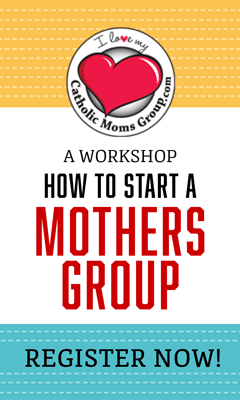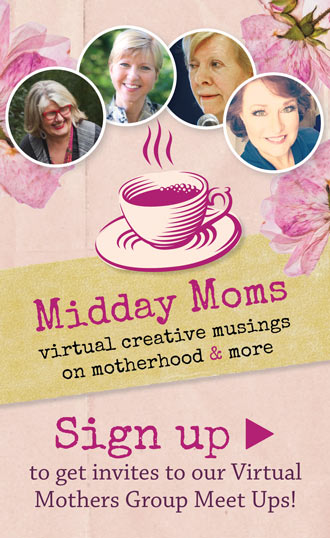
5 Steps to Bonding with Your New Born Baby
So it’s the last few weeks of your pregnancy and you just can’t wait to meet your new little bundle of joy! It’s hard to stop daydreaming about how delightful and rewarding your new life will be, until finally…it happens! That little baby that lived inside you for nine months, finally enters this world and is placed into your loving arms. It’s supposed to be magical, right? Motherhood should feel natural, easy, and comfortable, like slipping into an old pair of shoes. At least that’s what all those huggies and pampers commercials tell us…But the truth is, the first few weeks and months with baby are an emotional and physical bootcamp. Your body is sore in the most tender of places, you haven’t slept in days, your hormones are raging, and your life as you knew it is, well, gone forever. Bonding with baby may be the last thing on your mind when you are trying to figure out how to use the bathroom without busting a gut.
As a psychologist, I’ve worked with plenty of new moms and parents struggling with everything from the baby blues to postpartum depression. And I’ve always reminded them that forming an attachment with baby doesn’t always come naturally – that it is a process that can take a lot of hard work, even for those who don’t struggle with sadness. But that advice didn’t truly hit home until I had my son. As a graduate student, I spent the better part of my 20’s and 30’s studying attachment and maternal sensitivity. So I thought I might have a leg up on bonding with my little one. But let me tell you, there is no book in the world that can prepare you for being a new mom. In my case, I definitely felt an immediate instinct to love, protect, nurture, and care for my newborn son. But in those first few weeks at home with him, these feelings were often overshadowed by a looming sense of sadness, a feeling of loss over the simplicity of life before baby, and the physical pain of recovering from stitches and breastfeeding. Every little thing seemed to send me into a crying spell. Though it’s not often talked about, if you’re like me (and let’s face it, most other moms out there), motherhood is NOT like slipping into an old shoe. Unfortunately, newborns don’t do a lot of responding to your infinite love with things like coos or smiles, which can make it hard to feel immediately bonded to them. The reality is, it takes time for babies to develop a true attachment to their moms, and the amount of this time varies from one mother-child dynamic duo to the next. A dear friend of mine once told me she didn’t really feel like a mother until her twin boys were 6 months old. Before then, she felt like a milking cow. I would say that’s about right.
Thankfully, there’s a science to forming a secure attachment with your child, and it’s a science that can be followed even if you’re not feeling yourself. You can fake it till you make it!
So, let’s start with the basics. Real attachment is more than a simple feeling of bonding or connection. It’s a two-way relationship that builds as your child learns that mommy is her safe haven. And she doesn’t learn this automatically. We need to prove it to her. Despite what your well-meaning relatives and friends might say, babies can’t be “too attached” to their mommies. Not in the first few years of life anyway. Attachment is a natural, healthy mechanism that has helped babies survive for millions of years. Beyond that, it is super protective for your child’s future mental wellness. Why? Because it helps them develop a stable, lasting, positive view of themselves as worthy of love, protection, warmth, affection, and all that yummy stuff. Forming a secure attachment with baby is like an art – a dance, if you will. And like any good routine, it takes some time, patience and practice to perfect. Below are some simple steps that can help you begin to learn this, oh so important, dance with your child:
1.
Respond to baby’s cues and clues.
It seems so basic, right? Your baby is hungry, so you feed her. She’s tired, so you rock or nurse her to sleep. She’s crying, so you hold her to your chest. Yet somehow, these maternal instincts have gradually been eroded by our societal expectation that babies should be doing these things on their own, and that, if they’re not, we’re spoiling them rotten. My baby has a strong voice (aka there are times when he cries a lot), and I can’t count the number of times I’ve been encouraged to sleep train him, let him cry it out, stop holding him so much, or put him on a schedule. Don’t get me wrong, I get where this comes from. Waking up for the 10th time at 4 in the morning to nurse your baby back to sleep is NOT fun, and on bad days can turn you into some kind of evil monster. At the end of the day, you do what you have to do to keep yourself sane. The problem with sleep training and putting babies on schedules is that we’re ignoring their little voices and teaching them that asking for our help is useless. So they stop. And when they stop, we have less opportunity to respond. While it’s a ton of hard work, responding to your child’s cues and clues (particularly their distress) is THE key to helping them feel safe, secure, and bonded with you. It’s the very foundation of attachment. And it’s not just about responding, but responding as quickly and accurately as you can based on your best hunch as to what’s bugging your bub. I had my baby at Markham Stouffville Hospital and the staff there really encouraged us to remember that you can’t spoil a baby. Truer words have never been spoken!
2.
Set aside time each day to play with your baby.
Believe it or not, children learn best through play. If only that were the case for adults! It might seem like a no brainer to have fun with your baby, but high quality, interactive play can take a lot of energy – especially for the new mom. I find that it’s impossible to be “on” with my child the whole day, so I like to pick a time when my levels of energy and positivity are at their best. How do you play “well” with baby? First, position yourself across from her so that you can make eye contact and see what she’s interested (and not interested) in. Really try and drop any agenda you might have, avoid forcing her to do things she doesn’t want to do, and follow her lead. That can be really hard – especially if you’ve bought a new toy and she shows more interest in the box or the wrapping that it came in. The truth is, despite all those promotional ads for products claiming to increase your child’s intelligence, babies don’t need any special gadgets to learn about their environment or grow cognitively. Some of my son’s favourite toys include plastic water bottles and paper bags. Great for his sensory development… and for my wallet! As you’re following your child’s lead, show your interest in his actions by “talking out” what he’s doing and labelling and describing the objects he’s playing with. In doing this, you’ll not only establish a great connection, you’ll also facilitate his language development. For babies that aren’t speaking yet, watch their body language and let them tell you what they want to do. Sometimes, I notice my little one eyeing something across the room, so we walk over together to explore his interest.
3.
Offer lots of praise and affection.
Having researched cross-cultural differences in parenting behaviour and attachment, this one may or may not come naturally to you, depending on your famiIy background and experience. It’s important to understand your own comfort level with affection, and to know that, in western societies anyway, affection and praise are an important part of children’s social and emotional growth and development. Look out for those milestones – from the first roll over to the first step – and let your baby know you’re proud of her. Hugs and kisses, skin-to skin time, and lots of physical touch are great. At the same time, make sure you monitor your baby’s reaction to stimulation. If she pulls away, turns her head, or arches her back, that’s her way of telling you she’s had enough. It’s best to listen to her wishes and back off. But I have to say I’m definitely guilty of laying on more affection than my little one can handle!
4.
Know that babies aren’t master manipulators.
When babies cry, it can be easy to assume that they’re deliberately trying to annoy or control us. But the fact of the matter is, their tiny brains just aren’t capable of that yet. All they know how to do is tell you what they need. And sure, this might mean that the more you pick them up when they cry, the more this pattern will continue. But that’s a sign that they know it’s safe to ask for what they need, and that you will provide it. Attachment! And rest assured, the more attention you give, the more independent and emotionally healthy your baby will be in the long run. So, when baby cries, look for reasons that keep you feeling positive and sensitive towards him (e.g. He’s really tired, or he’s going through a growth spurt, or he’s having a really hard time with teething). This will help you respond to him in a sensitive way.
5.
Take care of yourself.
This is, perhaps, the most important tip of all. One that, for me, is still a work in progress. Of course, the reason it’s so important is that none of the steps discussed above are possible unless you have the energy to do them! Don’t try to do it alone and remember that it takes a village. Arrange for a family member or friend to babysit so you can get that haircut or mani/pedi. If you’re a single mom or don’t have a lot of social support, Ontario Early Years Centres offer awesome, free programs that help you connect with other moms and gain access to resources. Also, find little ways to recharge your battery regularly – take that daily (or twice daily!) shower, eat that cupcake, or take that nap instead of doing the laundry or sweeping the floor. Your baby will thank you for it. Above all, cherish and soak in those moments when baby rewards your hard work by smiling at you, reaching for you, and preferring you over all others. These are all signs of healthy attachment!
There you have it, my fellow mommies! My Coles Notes version of a guide to a beautiful and lasting relationship with your child. Follow these steps, and you’re well on your way to establishing a solid foundation for your baby’s future social and emotional development.
Jessica Chan Tai
Jessica Chan Tai completed her doctoral degree in Clinical Developmental Psychology at York University in 2015. She specializes in the assessment and treatment of children, adolescents and families struggling with mental health concerns, including anxiety, depression, parent-child relationship and attachment difficulties, school refusal, and obsessive-compulsive disorder (OCD).
Currently, Jessica works as a Psychologist at the Toronto Catholic District School Board, and as a private practitioner through McLean Psychology Centre. She has developed her clinical skills in a variety of mental health settings, including community agencies, such as Blue Hills Child and Family Centre and Youthdale Treatment Centres, and in medical settings, including Southlake Regional Health Centre, Markham Stouffville Hospital, and Wise Elephant Family Health Team.
Jessica has research interests in the areas of immigration and acculturation and studies maternal-child health from a cross-cultural perspective.



